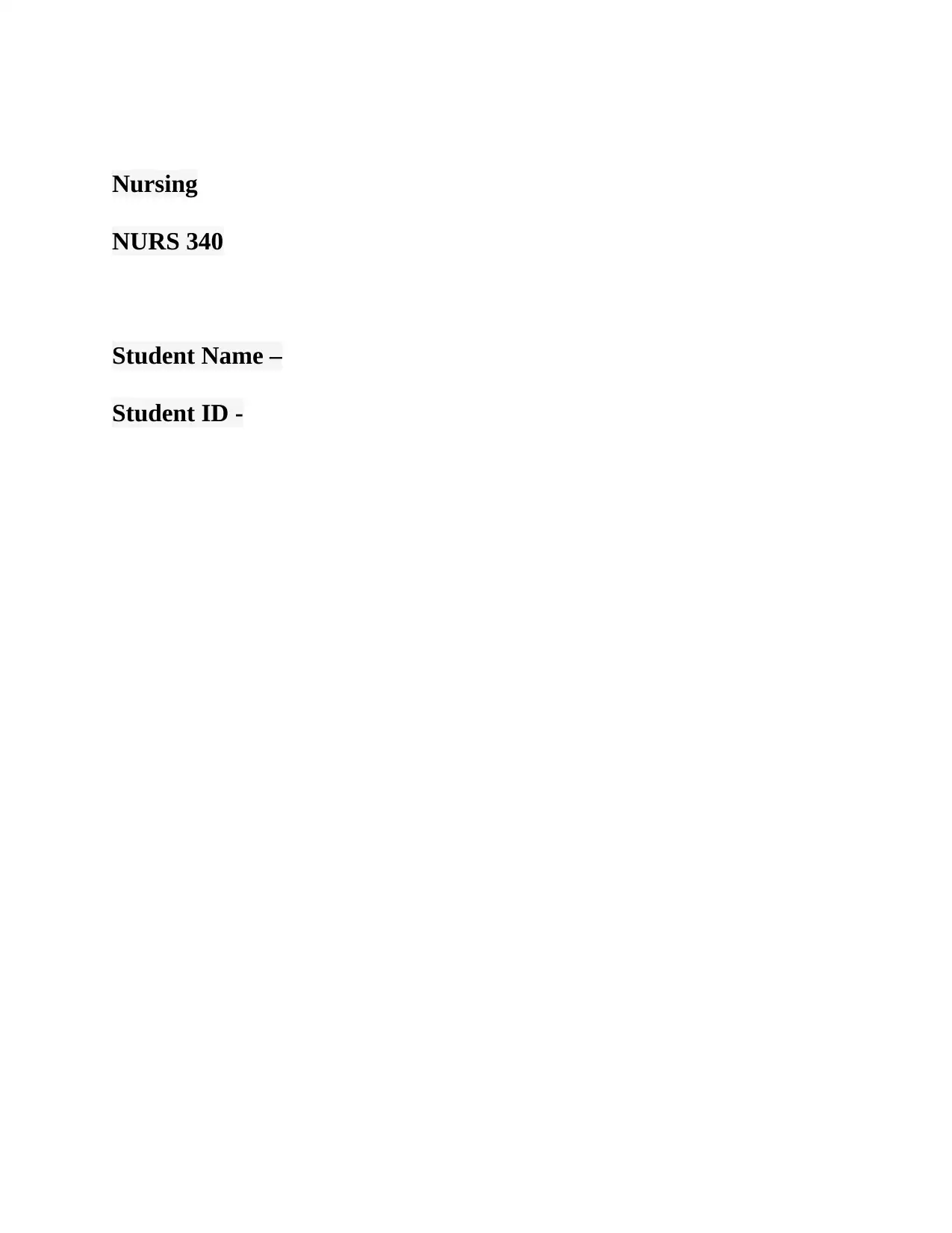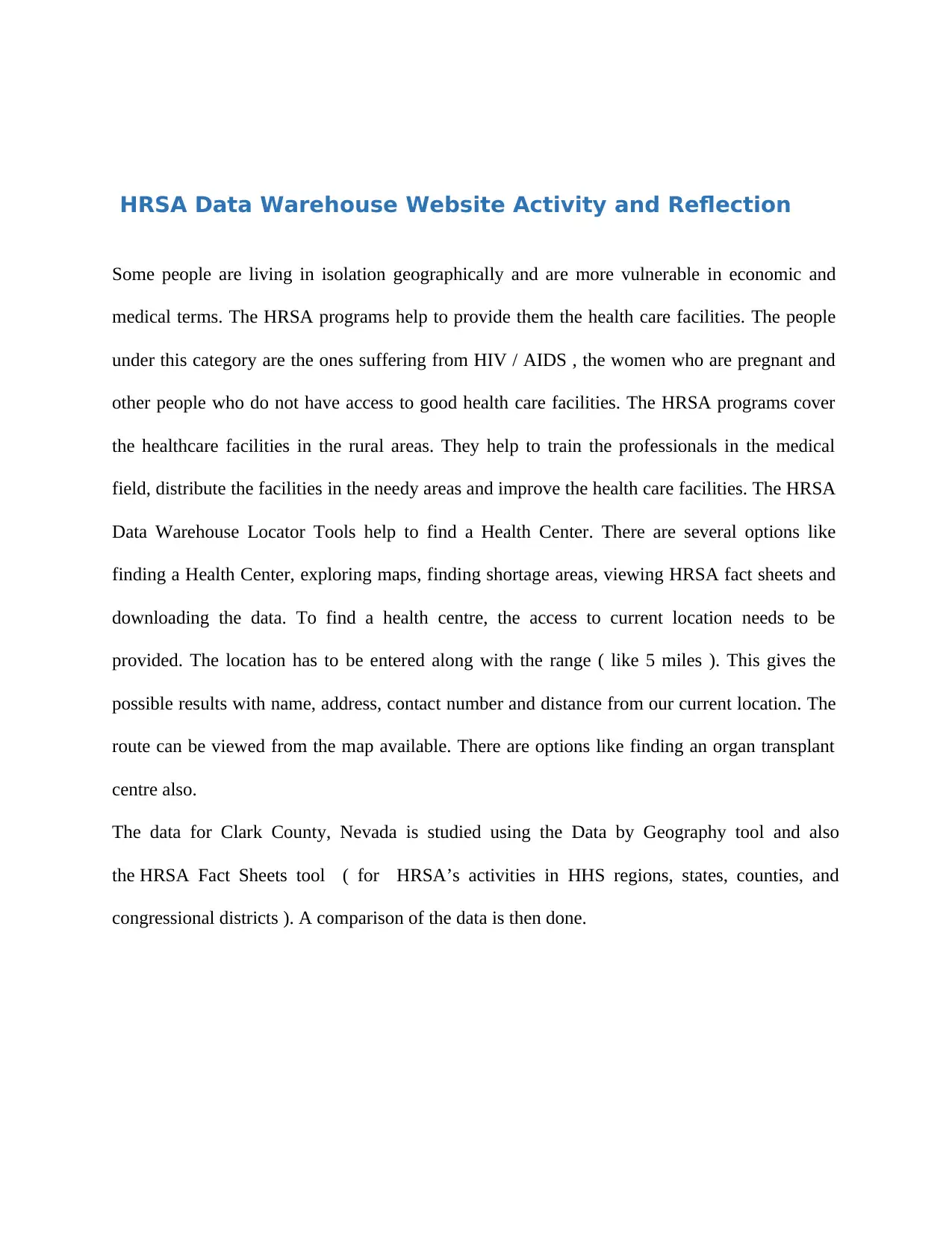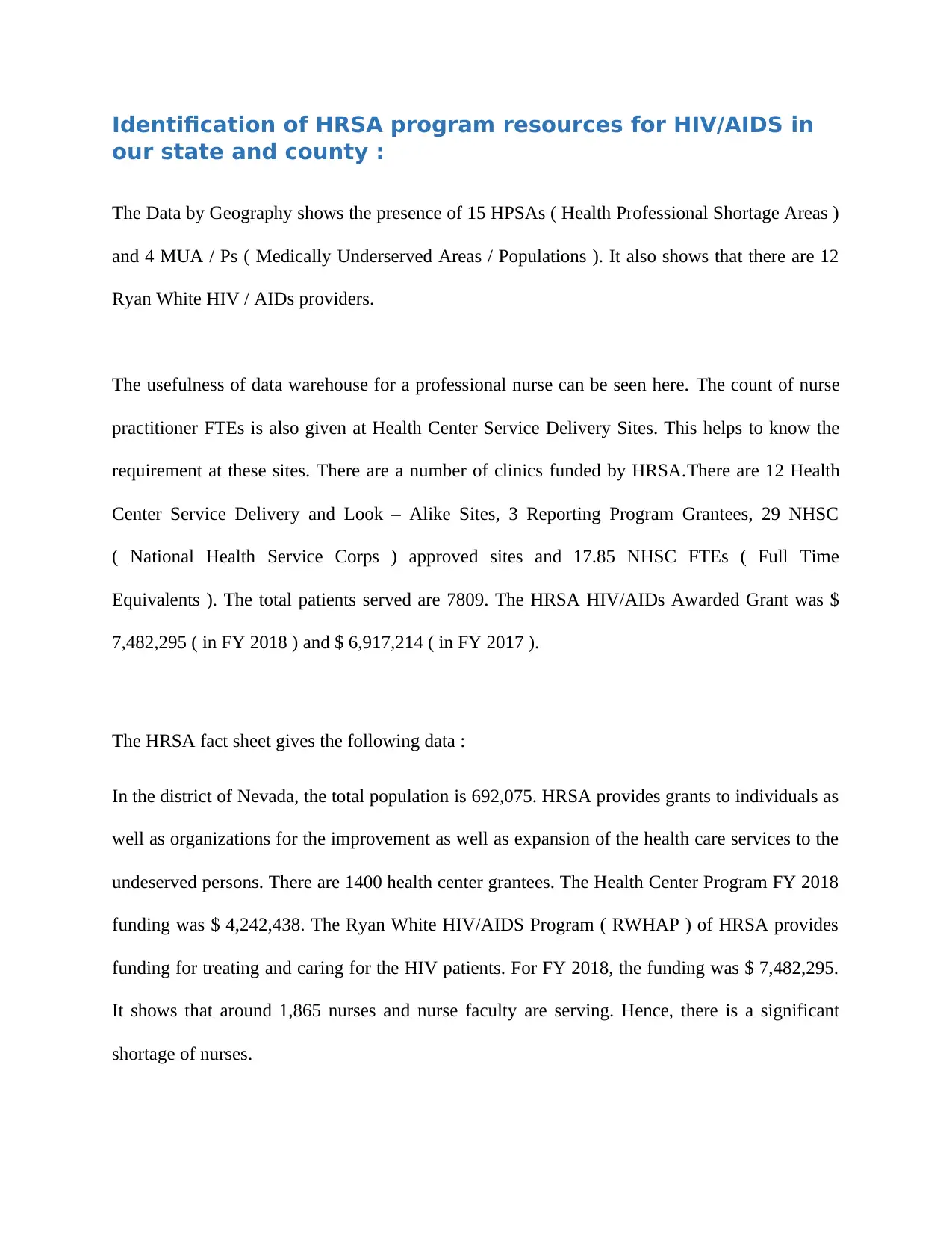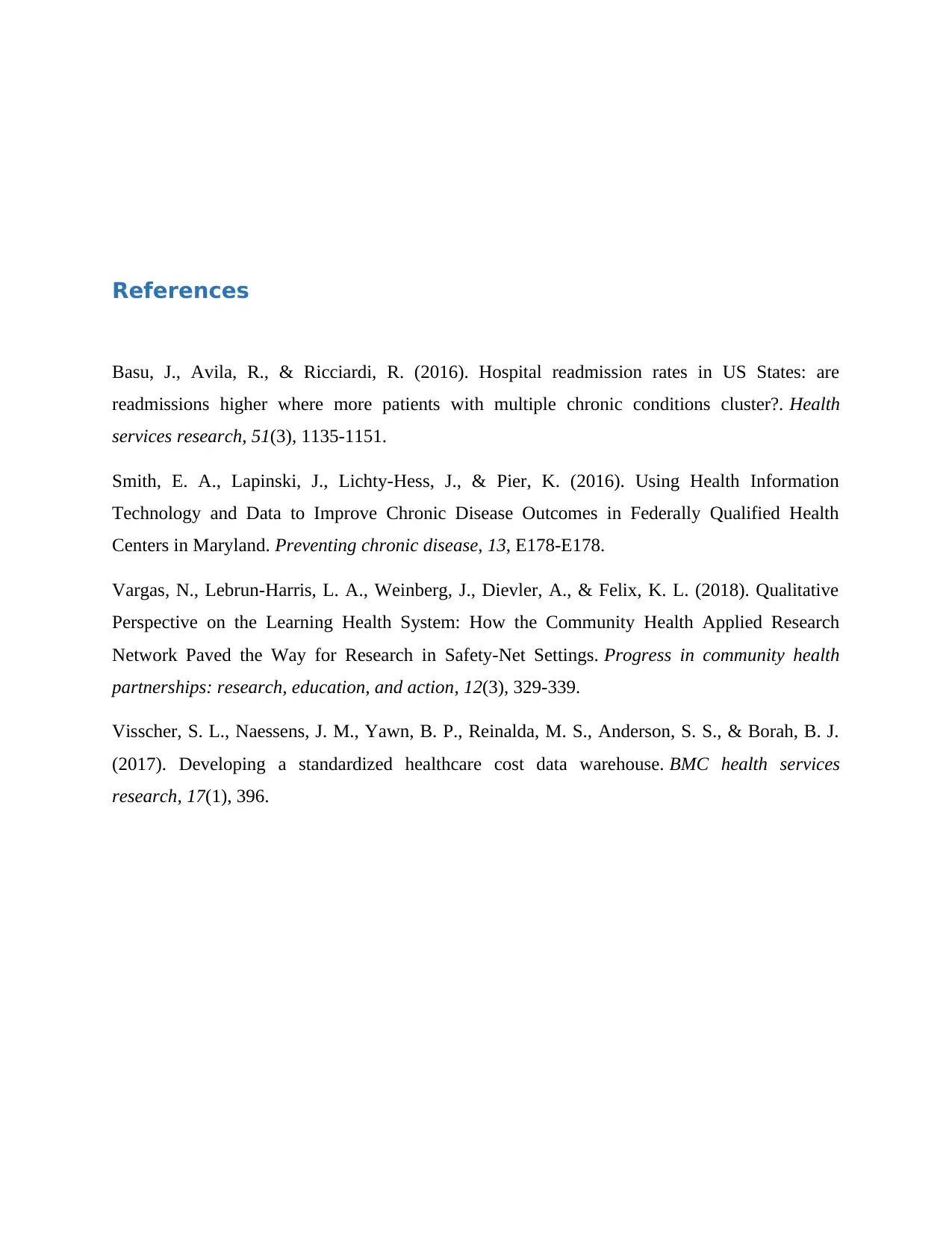HRSA Data Warehouse Website Activity and Reflection - NURS 340
VerifiedAdded on 2022/10/04
|4
|786
|11
Homework Assignment
AI Summary
This assignment analyzes the HRSA Data Warehouse, focusing on the health resources and programs available, particularly for underserved populations. The student explored the HRSA Data Warehouse website, including the Health Center Locator Tool and the Data by Geography tool, examining data for Clark County, Nevada, and comparing it to data from HRSA Fact Sheets. The analysis included identifying Health Professional Shortage Areas (HPSAs) and Medically Underserved Areas/Populations (MUA/Ps), as well as the resources for HIV/AIDS programs. The student also compared the data for Clark County, Nevada, with their own state and county, identifying HRSA program resources for HIV/AIDS and the number of clinics funded by HRSA. The assignment reflects on the usefulness of the data warehouse for nurses and the implications of the data on healthcare access and resource allocation, including the shortage of nurses. The references provided support the analysis of healthcare data and its impact on patient outcomes and resource allocation.
1 out of 4





![[object Object]](/_next/static/media/star-bottom.7253800d.svg)